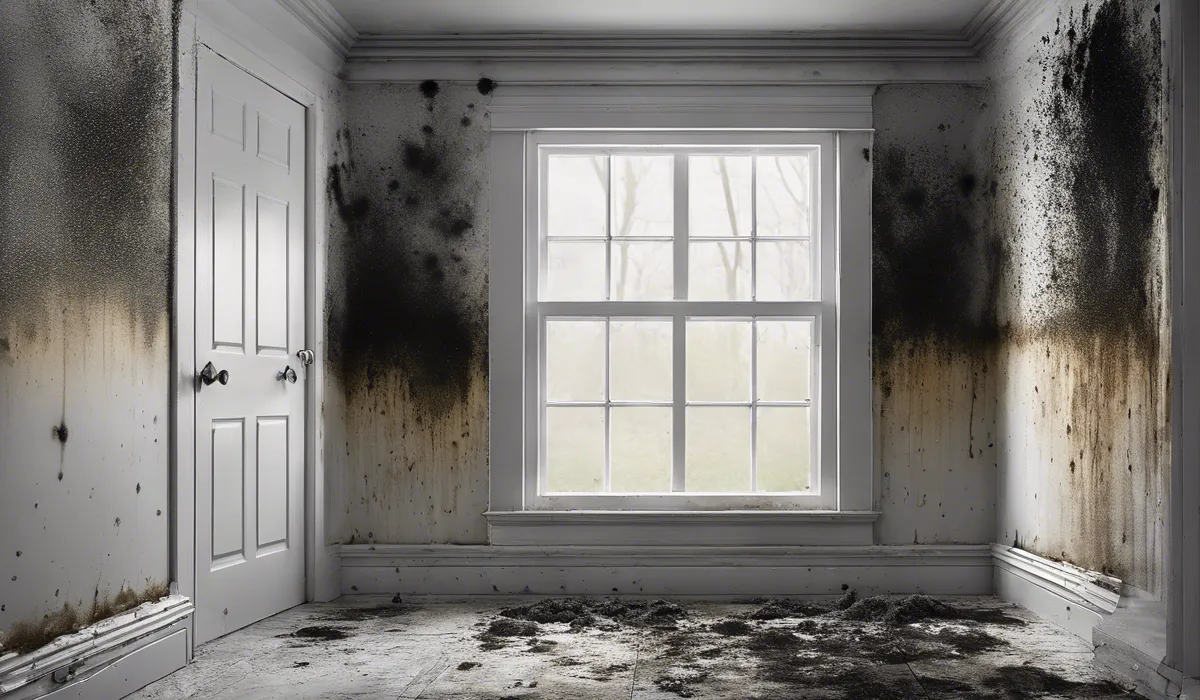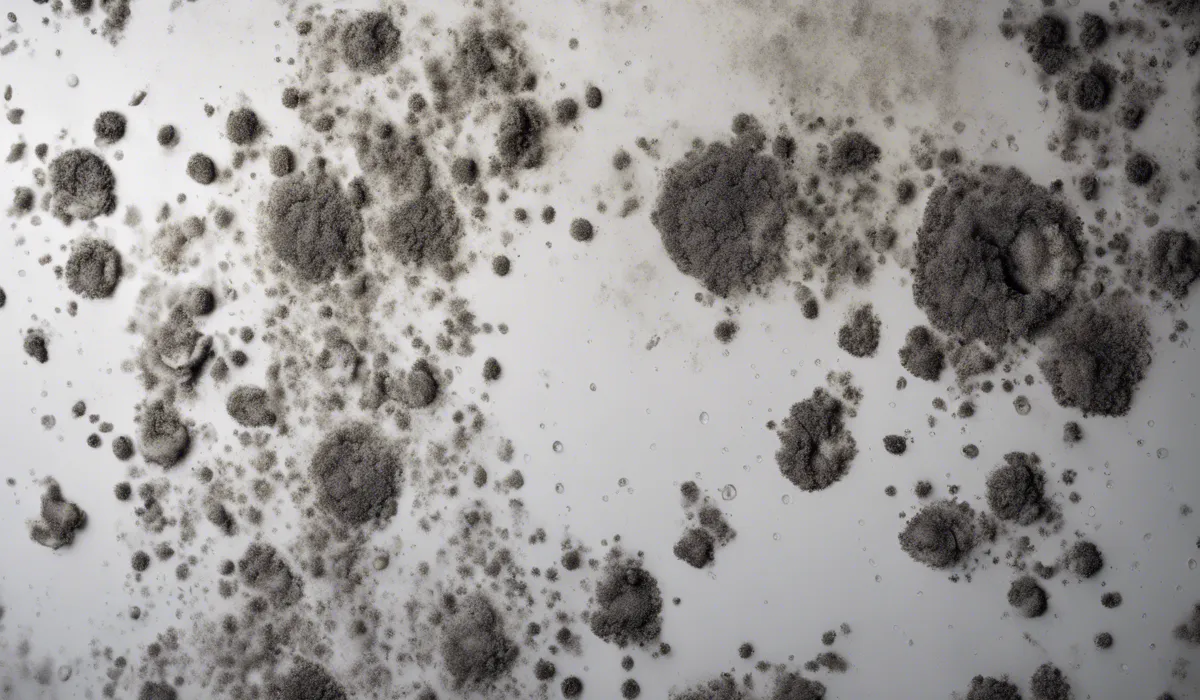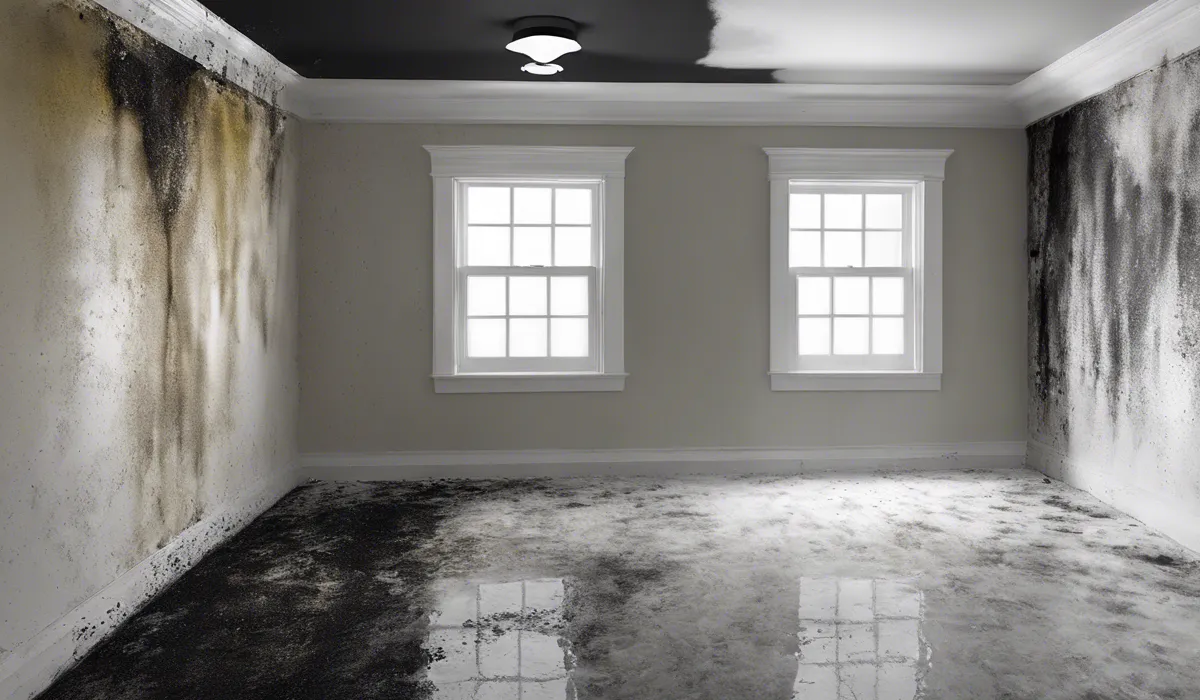Vinegar can kill black mold on non-porous surfaces by breaking down its structure and spores. However, it is less effective on porous materials. For a thorough removal, stronger solutions may be needed.
Understanding Black Mold

What Is Black Mold?
Black mold, known scientifically as Stachybotrys chartarum, is a type of fungus that thrives in damp, warm, and humid conditions.
It appears as dark greenish-black patches and can be slimy when wet. Often found indoors, this mold releases spores into the air, which can be harmful when inhaled.
Characteristics of Black Mold
Distinct by its color and texture, black mold typically grows on materials with a high cellulose content, such as drywall, carpet, or insulation, when they become water-damaged.
It has a musty smell and can spread quickly if not managed properly.
Health Risks of Black Mold Exposure
Exposure to black mold can cause various health issues, especially for those with allergies or weakened immune systems.
Symptoms may include coughing, sneezing, sore throat, and skin irritation. More severe reactions might involve respiratory problems and chronic headaches.
Black Mold Hotspots in Homes
In homes, black mold can typically be found in basements, bathrooms, and kitchens, where moisture levels are higher.
Leaky pipes, flooding, and poor ventilation create perfect conditions for mold growth.
The Efficacy of Vinegar Against Mold

Properties of Vinegar as a Mold Killer
Vinegar, a mild acid, can penetrate the structure of mold and kill it on the surface. Its acidic nature disrupts the growth and survival of the mold, making it a useful natural cleaning agent against mold infestations.
Research on Vinegar’s Mold-Killing Power
Studies have shown that vinegar can effectively kill a variety of mold species, including black mold.
A solution of white vinegar is often enough to tackle the mold on non-porous surfaces. However, its penetration on porous materials is limited.
Vinegar vs. Other Mold Cleaners
While bleach is commonly used for mold removal, it does not penetrate porous surfaces as effectively as vinegar.
Hydrogen peroxide, another alternative, is more effective on these materials but may be less safe. Vinegar is a safer, non-toxic choice, though it might require more time to work.
Practical Application of Vinegar for Mold Removal

Step-by-Step Vinegar Mold Removal Guide
To remove black mold with vinegar, start by ensuring the area is well-ventilated.
Then, apply undiluted white vinegar to the affected area, let it sit for an hour, and wipe the surface clean. Repeat if necessary to ensure all mold is killed.
Safety Measures When Using Vinegar
Always wear gloves and a mask to protect yourself from mold spores when cleaning mold with vinegar.
Keep the area ventilated to avoid inhaling fumes. If the mold area is extensive, consider hiring a professional.
Tips to Prevent Black Mold Recurrence
After treating mold with vinegar, keep the area dry to prevent regrowth. Use dehumidifiers and fans to improve airflow, fix leaks promptly, and clean regularly to catch early signs of mold.
FAQs About Vinegar Killing Black Mold
Can vinegar effectively kill black mold?
Vinegar can effectively kill black mold on non-porous surfaces by breaking down its structure and spores.
Is vinegar a good solution for removing black mold on porous materials?
No, vinegar is less effective on porous materials, and stronger solutions may be needed for thorough mold removal.
What type of vinegar is best for killing black mold?
White distilled vinegar is commonly recommended for killing mold because it is acidic and can break down mold spores.
How long should vinegar sit to kill black mold?
Vinegar should be allowed to sit for at least an hour before wiping or rinsing it off to kill black mold effectively.
Are there any safety concerns when using vinegar to kill black mold?
While vinegar is a natural and safe alternative to harsh chemicals, it’s important to wear protective gear like gloves and a mask when treating mold to avoid inhaling spores.
Final Thoughts
Vinegar has been shown to be effective against black mold on non-porous surfaces by disrupting mold structure and spore viability.
However, its efficacy is diminished when dealing with porous materials where more potent solutions might be necessary for comprehensive mold eradication.
